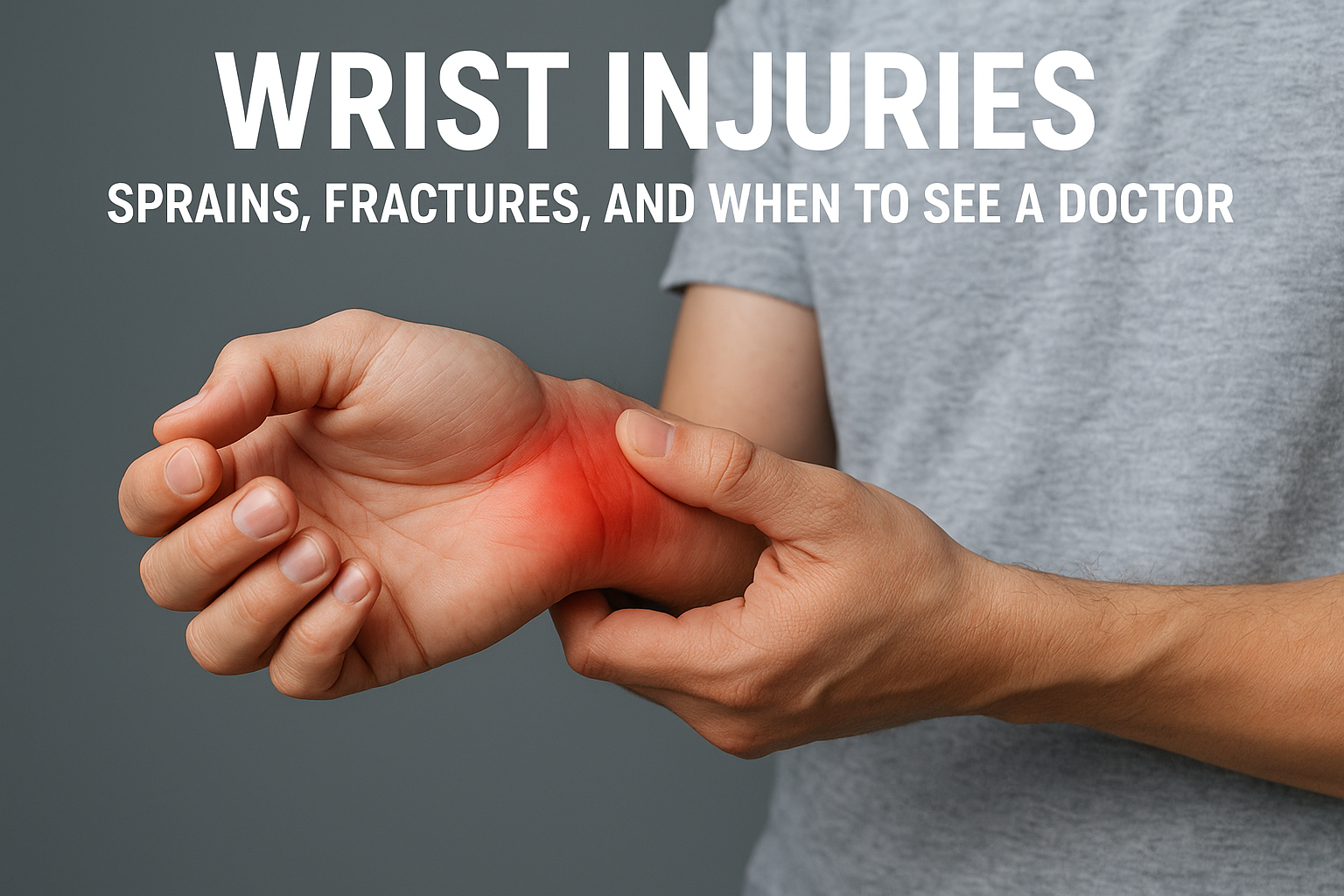The wrist plays a vital role in everyday activities like lifting, typing, and gripping. Unfortunately, wrist injuries are common due to falls, sports, and repetitive movements. Understanding the causes, symptoms, and treatment of wrist sprains and wrist fractures can help you take the right steps for recovery and prevent long-term damage.
Common Causes of Wrist Injuries
Wrist injuries often occur from:
- Falls: Landing on an outstretched hand can lead to a wrist fracture or ligament tear.
- Sports Injuries: Activities like basketball, skating, or gymnastics can cause wrist sprains.
- Repetitive Strain: Overuse from typing, lifting weights, or using tools can lead to tendonitis or carpal instability.
- Accidents: Sudden trauma or impact can cause severe joint damage.
Wrist Sprains: Causes and Symptoms
A wrist sprain happens when the ligaments supporting the wrist stretch or tear.
Symptoms include:
- Pain, swelling, and bruising around the wrist
- Difficulty moving or rotating the wrist
- Weakness or instability in the joint
Mild sprains may heal with rest and support, while severe sprains may need immobilization or even surgery under expert supervision.
Wrist Fractures: Signs and Treatment
A wrist fracture refers to a break in one or more bones in the wrist, usually the radius.
Symptoms include:
- Sharp pain at the injury site
- Swelling and deformity
- Inability to move or bear weight on the wrist
Treatment for wrist fractures varies from casting and splinting to surgical fixation depending on the severity. Early diagnosis through X-ray or MRI ensures faster healing and proper alignment.
When to See a Doctor for Wrist Pain
Ignoring wrist pain can worsen the injury. You should consult a hand specialist if you notice:
- Persistent swelling or bruising
- Limited movement or stiffness
- Numbness or tingling sensation
- Severe pain even at rest
Prompt medical attention helps prevent complications like arthritis, nerve compression, or chronic instability.
Diagnosis and Treatment Options
Your doctor may perform a physical examination and recommend imaging tests to assess the damage.
Treatment options include:
- Immobilization: Using a splint or cast to support healing.
- Physiotherapy: Restores flexibility and strength.
- Medications: Reduce pain and inflammation.
- Surgery: Required for complex fractures or ligament tears.
Recovery and Prevention Tips
- Use protective gear during sports.
- Strengthen wrist muscles with gentle exercises.
- Avoid repetitive strain and take frequent breaks.
- Follow your doctor’s recovery plan carefully.
Conclusion
Early diagnosis and treatment of wrist injuries ensure proper healing and prevent chronic pain. If you experience persistent discomfort or swelling, seek expert help immediately.
For specialized wrist care, consult our Best Orthopedic Surgeon in Hyderabad Regain Bone & Joint Care for accurate diagnosis and advanced treatment options.
Healthy wrists mean a stronger, pain-free lifestyle. Prioritize your hand health today!

